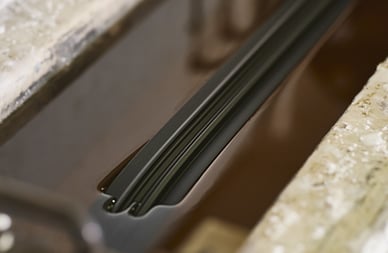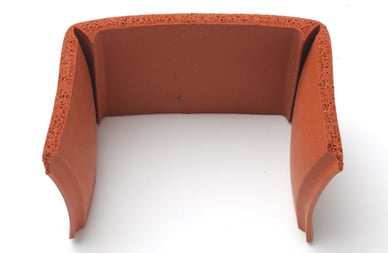
As the rubber passes through heating zones in the cure system, it reaches a temperature at which the blowing agent decomposes and gas bubbles form, creating individual cell structures in the rubber.
Material Qualities
Cooper Standard ISG specializes in closed-cell sponge rubber products. This material consists of enclosed cells independent from other cells, each with its own structure.

Closed-cell rubber doesn't let fluids seep in and stays afloat in water.
Open-cell rubber has distinctive cells that are open and interconnected to neighboring cells. This lets air and moisture seep in easily, giving the rubber an absorbent quality.
Both open-cell and closed-cell products offer superior compression qualities when compared to a dense material.
Learn more about rubber compression properties.
Related Topics: Material Science, EPDM, Sponge Rubber

